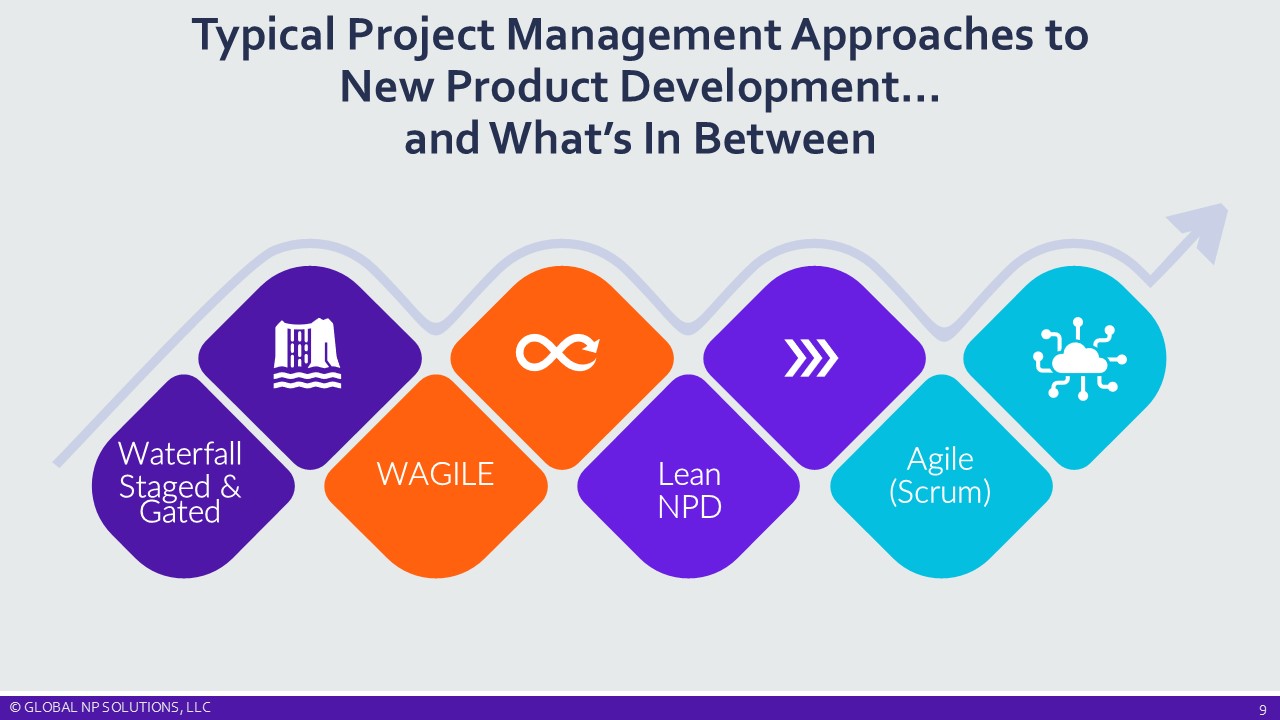In the summer of 2022, I had the privilege of speaking at the Houston PMI Annual Conference. It was really terrific to be back in person after the long break for Covid and to meet old friends. It was also rewarding to meet new friends over coffee, at lunch, and during breakout sessions. In the virtual world, I would never have had the joy of meeting Greg, Kim, Kaylie, Alton, or Collin. Yes, it was good to be back in person!
My presentation at the conference was titled “What’s In Between? Hybrid Waterfall-Agile for Product Development.” A long title, but it is descriptive (get more info here). There were several talks over two days on hybrid approaches to project management. My belief is that as project managers and product managers, we are maturing to understand that no single cookie cutter system will address every need.
Innovation Risks
We use project management systems to handle risk and uncertainty that occurs in every project. With innovation, we encounter well-framed risks that define the markets, technologies, and product categories. Interestingly, we may initiate a new product development (NPD) project with a certain set of criteria yet find that the product features evolve over time. Project management for product development must be flexible (agile) because we learn as we go.
Product development starts with an idea or concept. We test those ideas and concepts with potential customers to see if we truly understand their needs. Next, we begin designing specific features and prototypes. And we test our assumptions with customers and end-users again and again, refining the design until the product is ready for commercialization. With incremental design and testing, we are able to manage much of the inherent risk and uncertainty that comes with innovation.
Exceptions
The beauty of project management is that it provides a framework for planning and organizing our work. Whether we use waterfall with a full, detailed, upfront plan, or we use Agile with evolving, iterative plans, projects are executed and monitored against planned activities. Project plans help us to manage uncertainties for the risks of NPD by creating a set of steps and activities. In this way, we minimize investment risk and maximize customer acceptance (profit).
Exceptions to project plans are what cause the development effort to fall behind schedule or to run over budget. A good project manager and an excellent project plan will identify significant risks at the outset. However, it is the surprises – exceptions – that introduce the most turmoil and chaos to a project plan.
A good strategy for NPD projects is to follow exceptions rather than routine work. By creating an initial set of boundary conditions (such as project cost, schedule, scope, revenue, and market share), the project team can manage exceptions and work autonomously. When a boundary condition is threatened (say the project cost is within 10% of the expected expenditures at a particular stage of work), the project team designs a plan of attack. If they can manage the exception internally (e.g., a one-time unexpected expense for software pushes the budget), there are no extra actions necessary.
On the other hand, if pushing the boundary condition requires a management decision (e.g., supply chain disruptions push the schedule by 12 weeks), the team raises the issue to executives. The exceptions (and the project) are reviewed by senior leaders for a decision to go forward or halt/revise the product plan.
Using Exception Management
While I’m a huge fan of staged-and-gated (waterfall) project management processes for NPD, many organizations add bureaucracy to prevent all risks. Of course, such high levels of risk-adversity hinder creative innovation. Consider instead to manage exceptions and allow project teams autonomy and focus to do their work within a prescribed set of boundary conditions.
Learn More About Hybrid Processes for NPD
PMI-Houston in 2022 was a lot of fun and I look forward to presenting to the Houston PMI chapter again soon. The organizing committee did a stellar job to get folks back together in person in 2022. I hope attendance grows back to the numbers of 2018 and 2019 soon! In-person events are great for meeting old and new friends and connecting with other project and product management colleagues.
If you were unable to be in Houston to hear my talk on What’s In Between? I will be presenting the same topic virtually with the PMI Phoenix chapter on September 26, 2025.
In the meantime, you can register for my six-week Hybrid Project Management Course starting August 12, 2025 here.
© 2022-2025 Global NP Solutions, LLC
Building Innovation Leaders
About Me
I am inspired by writing, speaking, and coaching. I tackle life with an infusion of rigor, zeal, and faith. It brings me joy to help you build innovation leaders. I have over 25-years of experience as an innovation professional and a passion for lifelong learning with a PhD in Chemical Engineering and an MBA in Computer and Information Decision Making. My credentials include NPDP, PMP®, and CPEM, and I am a DiSC® certified facilitator. Contact me at info@globalnpsolutions.com or area code 281 + phone 787-3979 for more information on coaching for entrepreneurs and innovators.

